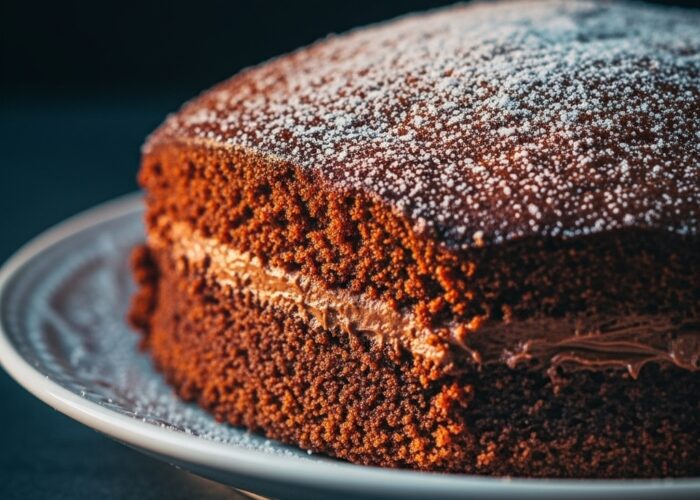Sicilian Cassatelle with Ricotta (Sweet Ravioli)
If you’re a fan of Italian desserts like cannoli or cassata, there’s another hidden gem from Sicily you need to try: Cassatelle. These delightful, sweet pastries, stuffed with creamy ricotta and fried to golden perfection, are a beloved tradition in western Sicily, especially in the province of Trapani.
Originating in Trapani, western Sicily, cassatelle have deep roots in Mediterranean and Arab culinary traditions. Their name is a diminutive of cassa (meaning box), a nod to their pastry casing. Sicilian desserts often reflect a fusion of cultures, and cassatelle are no exception. With ingredients like ricotta, cinnamon, and candied fruit, they carry the flavor of centuries-old influences from across the Mediterranean.
Cassatelle, also known as cassateddi in Sicilian dialect, are traditional Italian pastries from Sicily that can be enjoyed either baked or fried. While the fried variety is often seen as the classic version, the baked cassatelle are equally beloved and offer a lighter, yet still delicious, alternative.
Cassatelle are crescent-shaped pastries filled with sweet ricotta cheese, sometimes enhanced with chocolate chips, cinnamon, or citrus zest. Once filled and sealed, they’re deep-fried until crispy and then dusted with powdered sugar. They’re often enjoyed during Easter celebrations in Sicily, but locals love them year-round.
Whether fried or baked Cassatelle are more than just dessert
Whether fried for a festive occasion or baked for a quiet Sunday afternoon Cassatelle are more than just dessert, they’re a love letter to Sicilian hospitality, made to be shared, savored, and remembered. They carry the warmth of family kitchens, the rhythm of time-honored traditions, and the unmistakable flavor of Sicily’s sun-soaked countryside.
And when they’re fried. They puff slightly, taking on a golden, blistered exterior that crackles under your teeth. The filling inside stays creamy and rich, warm and comforting. A final dusting of powdered sugar adds the perfect kiss of sweetness, like snow falling on a Sicilian morning.

Baked cassatelle, on the other hand, bring a quieter kind of joy. They’re neater, easier to prepare, and lighter on the stomach, but they don’t lose their soul. In fact, many modern bakers opt for the oven method so they can enjoy them more often, without the extra indulgence of oil. Still buttery and soft, with a crisp golden shell, they make the perfect companion to an afternoon espresso or a late-night treat with tea.
Differences Between Baking and Frying Cassatelle Recipes
| Aspect | Frying Version | Baking Version |
| Cooking Method | Deep-fried in hot oil (340–350°F) | Baked in the oven at 375°F |
| Texture | Crispy and golden, slightly oily exterior | Crisp but lighter, with a drier crust |
| Fat Content | Higher, due to oil absorption during frying | Lower fat, as no oil is absorbed |
| Dough Composition | Often includes lard or butter for richness and to withstand frying | Similar dough but can be slightly softer since no frying |
| Cooking Time | Quick — 2–3 minutes per side | Longer — about 20–25 minutes |
| Preparation Tips | Dough needs to be sturdy to hold filling and withstand frying temperature | Egg wash is used to create a golden finish on top |
| Finish | Dust with powdered sugar immediately after frying | Dust with powdered sugar once cooled slightly |
| Flavor Notes | Richer, more indulgent due to frying | Lighter taste, but still rich and flavorful |
Difference between Sicilian Cassatelle and Ravioli Dolce
At first glance, Sicilian cassatelle and ravioli dolce might seem like long-lost relatives both sweet-filled pockets, dusted with sugar, made for celebration. But bite into each, and the difference is clear. Cassatelle are pure Sicilian comfort: flaky, wine-kissed pastry wrapped around creamy ricotta or spiced chickpeas, fried to a golden crisp. They’re the kind of treat Nonna might make for Easter, her kitchen filled with the scent of sugar and citrus. Ravioli dolce, meanwhile, feel more rustic, more improvised born from the pasta dough of everyday meals, filled with whatever the harvest left behind: chestnuts, jam, ricotta, or nuts. They show up at Carnival, at Christmas, at weddings, wherever there’s a reason to gather and share. One dessert whispers of Sicily’s sun-soaked traditions, the other of Northern kitchens making magic out of leftovers. Different roots, same joy.
Key Differences: Same Shape, Different Story: (Sweet Ravioli)
| Feature | Sicilian Cassatelle | Ravioli Dolce |
|---|---|---|
| Region | Sicily | Mainland Italy (varied) |
| Dough | Pastry-like, wine/lard dough | Egg pasta dough |
| Filling | Sweet ricotta, chickpeas | Ricotta, nuts, jam, chocolate |
| Cooking | Fried | Fried or baked |
| Occasions | Carnival, Easter | Carnival, Christmas, weddings |
| Texture | Crisp, flaky | Firm, al dente or crunchy |
Variations of Cassatelle
Cassatelle di Agira: A unique variation from central Sicily, these cassatelle are baked (not fried) and filled with a sweet paste made from chickpeas, cocoa, almonds, and spices — a delicious twist on the classic ricotta filling.
Chocolate or Nutella Filling: For a modern take, swap out the traditional ricotta filling for creamy Nutella or chocolate ganache, perfect for chocoholics.
Fruit-filled Cassatelle: Incorporate finely chopped candied fruit (like orange peel or citron) or a spoonful of jam into the ricotta filling to add a burst of fruity sweetness.
Vegan Cassatelle: Replace ricotta with vegan alternatives such as almond ricotta or blended tofu sweetened with powdered sugar and flavored with vanilla or cinnamon. Use a plant-based fat (like coconut oil) in the dough.
Storage
Short-term storage: Cassatelle are best enjoyed fresh, ideally the same day they’re made. If needed, store them in an airtight container at room temperature for up to 24 hours.
Refrigeration: If you want to keep them longer, place cassatelle in an airtight container and refrigerate for up to 2 days. Before serving, warm them gently in the oven at 300°F (150°C) for 5–10 minutes to refresh the texture.
Freezing: Cassatelle can be frozen either before or after cooking. To freeze before cooking, shape them and place on a baking sheet lined with parchment paper, freeze until firm, then transfer to a freezer bag. Cook from frozen—fry or bake a few minutes longer than usual.
Cooked cassatelle can also be frozen in airtight containers for up to 1 month. Reheat in the oven to restore crispness.
Avoid sogginess: Keep cassatelle dry and avoid stacking too many layers without parchment paper to prevent sticking and sogginess.














